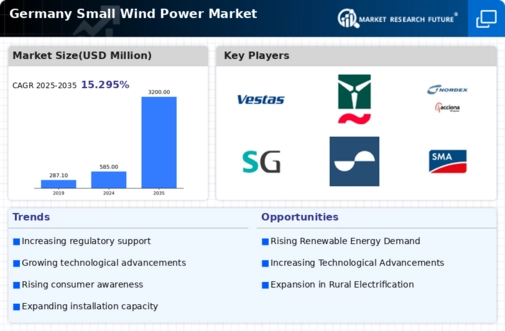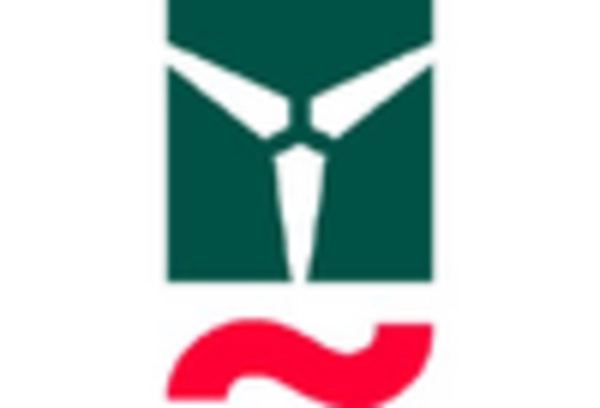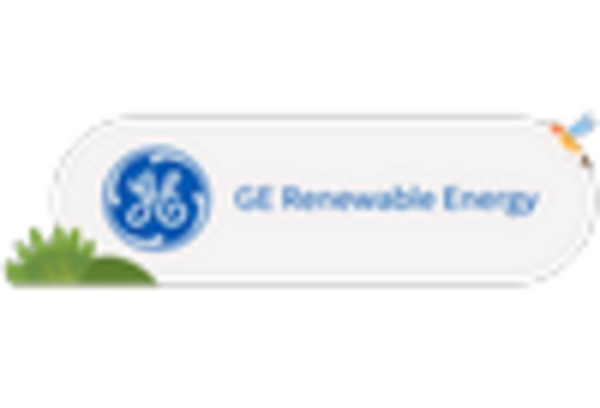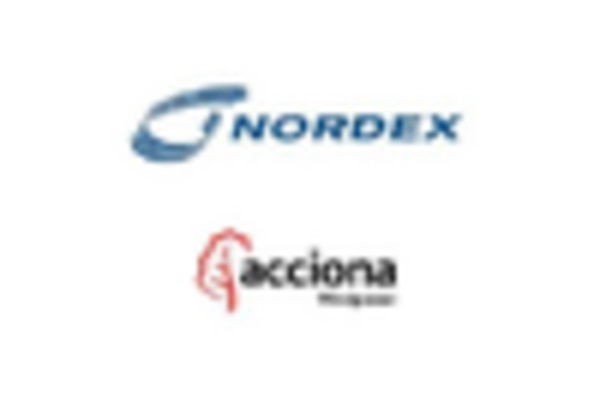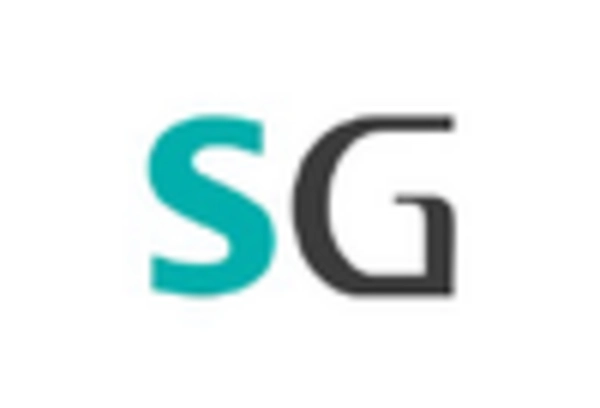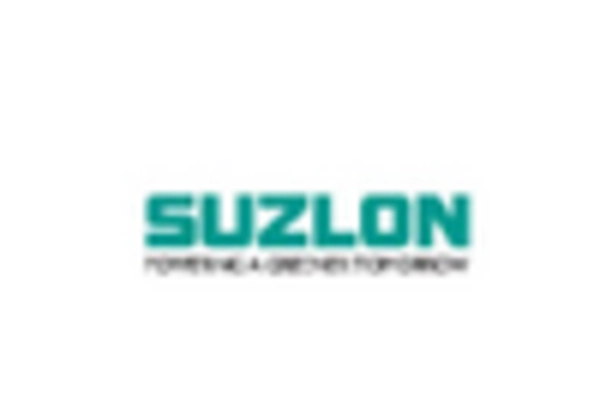Rising Energy Costs
The small wind-power market in Germany is experiencing a notable surge due to the increasing costs of conventional energy sources. As fossil fuel prices fluctuate, consumers and businesses are seeking alternative energy solutions. The average electricity price for households in Germany has reached approximately €0.30 per kWh, prompting a shift towards renewable energy sources. This economic pressure encourages investments in small wind-power systems, which can provide a more stable and potentially lower-cost energy supply over time. Furthermore, the small wind-power market is likely to benefit from this trend as more individuals and organizations recognize the long-term financial advantages of harnessing wind energy.
Decentralized Energy Generation
The small wind-power market in Germany is gaining traction due to the growing trend of decentralized energy generation. This approach allows consumers to produce their own energy, reducing reliance on centralized power grids. With the German government promoting energy independence, the small wind-power market is positioned to thrive. The installation of small wind turbines enables households and businesses to generate electricity on-site, which can lead to reduced energy costs and increased energy security. As of 2025, it is estimated that decentralized energy systems could account for over 30% of Germany's total energy generation, highlighting the potential for small wind-power solutions.
Supportive Financing Mechanisms
The small wind-power market in Germany is bolstered by supportive financing mechanisms that facilitate investment in renewable energy projects. Various funding programs and subsidies are available to individuals and businesses looking to install small wind turbines. For instance, the KfW Bank offers low-interest loans and grants for renewable energy projects, making it easier for consumers to adopt wind energy solutions. This financial support is crucial for the small wind-power market, as it lowers the barrier to entry for potential investors. As financing options continue to expand, the market is expected to grow, enabling more stakeholders to participate in the transition to renewable energy.
Environmental Sustainability Initiatives
The small wind-power market in Germany is significantly influenced by the country's commitment to environmental sustainability. With ambitious targets to reduce greenhouse gas emissions by 55% by 2030, the small wind-power market is poised for growth. The German government has implemented various initiatives to promote renewable energy, including financial incentives for small wind turbine installations. These initiatives not only support the transition to cleaner energy sources but also align with the increasing public demand for sustainable practices. As awareness of climate change impacts rises, the small wind-power market is likely to see a surge in adoption as individuals and businesses seek to contribute to a more sustainable future.
Technological Innovations in Turbine Design
The small wind-power market in Germany is benefiting from ongoing technological innovations in turbine design. Advances in materials and engineering have led to the development of more efficient and compact wind turbines, making them suitable for urban and rural settings alike. These innovations enhance energy capture and reduce noise levels, addressing common concerns associated with wind energy. The small wind-power market is likely to see increased adoption as these new technologies become more accessible and affordable. Furthermore, the integration of smart technology into wind systems allows for better monitoring and optimization of energy production, further driving interest in small wind solutions.


